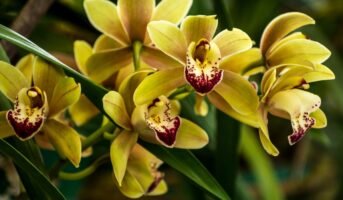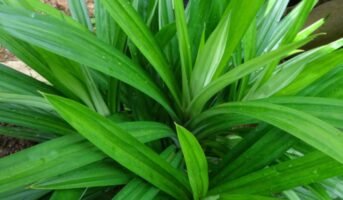
In this competitive world, humans are always in a rush to succeed. After long work hours and a hectic schedule, we enjoy our time at home. To make this time more refreshing and soothing, you must try to develop a beautiful green corner within your house. You can plant herbs and trees to decorate your lawn or terrace. You can enjoy the mesmerizing beauty and the sweet fragrance of fruits and flowers within your house. Isn’t that amazing?
Now, the confusion that may come up in your mind is which trees to plant. To resolve your dilemma, we have a suggestion for you – Arachis hypogaea. Don’t be confused; the scientific name of peanuts contains our favorite groundnuts. Peanuts are grown and consumed all over the world. However, China is the largest producer and exporter of groundnuts. India stands in the second position in groundnut production. Now, let’s read more about this popular plant – Arachis Hypogaea.
What are Arachis Hypogaea?
Arachis hypogaea, or more popularly groundnut plant, is a legume crop grown mainly for its edible seeds. Peanut is an herbaceous plant that grows annually. It is also known as Peanut Plant, Goober Plant, Pindar Plant, Monkey Nut, etc. Peanuts are produced and consumed all over the world. However, China is the most significant producer and exporter of Groundnuts.
Arachis hypogaea, or more popularly, the groundnut plant, is comparatively easier to grow. And it requires a moderate amount of maintenance. It belongs to the Fabaceae family, which contains many other leguminous plants, including Peas, beans, soybean, chickpea, etc. Arachis hypogaea consists of beautiful yellow flowers, a treat to the eyes. The plant is mainly used for its aesthetic pleasure, medicinal importance, and commercial viability. Come, let’s have a look at some facts about the groundnut plant.
Basic facts about Arachis Hypogaea
| Name of the Species | Arachis hypogaea |
|---|---|
| Taxonomic tree | Domain: Eukaryota
Phylum: Angiospermae Family: Fabaceae Genus: Arachis Species: hypogaea |
| Plant type | Herbaceous plant.
Seed propagated. It is a climber that Grows Annually. |
| Distribution | Arachis hypogaea are native to the South American continent. It originated in Peru, Bolivia, Argentina, Brazil, etc. These days, it is grown and consumed all over the world. However, China is the most significant producer of Groundnuts, with India leading in the second position. |
| Other names | are Groundnut Plant, Peanut Plant, Goober Plant, Pindar Plant, Monkey Nut, etc. |
| Cultural/amenity | Impact- Positive |
| Human health | Impact- Positive |
| Uses | It is used for enhancing décor, medicinal research, and other commercial purposes. |
| Maximum Height | 30 – 50 cm (12 to 20 inches) High at maturity |
| Temperature range | 72 – 80 F (22 – 27 C) |
| Best season for growth | April – June: Flowering Season
August – October: Harvest Season |
| Maintenance | Moderate maintenance |
see also about: Episcia Know more about Flame Violets
How to grow Arachis Hypogaea?

Source: Wikepedia
Arachis hypogaea don’t need much effort to be grown in your garden. However, it doesn’t grow on its own. You need to follow some guidelines to make this plant bloom attractively. Like other plants, Arachis hypogaea also has a few characteristics and requirements that must be fulfilled for its proper growth. Let’s have a look at those specific wants of the Arachis hypogaea plant.
Soil type and quality required
Groundnut plants deliver the best growth when planted in Loamy soil. The soil must be slightly acidic with a pH range between 6 – 7. Alkaline soil is harmful to the growth of the plant. Well-fertilized and well-drained soil type is best for this plant. Organic matter and humus must be abundant in the soil. Soil testing is advisable as it will help you determine all the nutrients lacking in it. You can add them using fertilizers.
Water requirements
Not much water is demanded by the Arachis hypogaea plant. It can grow even with low groundwater levels. The minimum water level required by the plant is around 350mm (14 inches) deep. But to witness the best growth, you must provide the plant with at least 500mm (20 inches) of water levels in the ground.
Temperature and humidity requirements
The Arachis hypogaea plant grows the best in tropical and subtropical climates. A temperature between 22 – 27 C (72 – 80 F) will be best for the plant. Arachis plants cannot resist extreme winters. It will not grow in hilly and temperate areas, including states like Kashmir, Himachal Pradesh, etc. Humidity levels need to be moderate for proper growth of the plant.
Light conditions
Although Arachis hypogaea is a summer-loving plant, subtle light intensity is appropriate. Direct sunlight can destroy the chlorophyll in the leaves, eventually leading to the death of the plant. At least six or more hours of direct sunlight are necessary for the proper development of the plant.
Fertilizer requirements
Peanut plants develop root nodules that help in satisfying the nitrogen requirement. Therefore, nitrogenous fertilizers are not necessary for the Arachis hypogaea plant. However, other minerals like phosphorus, potassium, calcium, magnesium and other micronutrients are required in adequate amounts for the proper growth of the Arachis hypogaea plant. Calcium is an essential nutrient for the peanut plant.
These are some points essential for the proper growth of the plant. Follow them if you want to see your groundnut plant bloom gracefully. However, besides them, there are a few other things to consider while taking care of the peanut plant. Let’s know the tips to maintain a groundnut plant in its best condition.
Tips for maintaining Arachis Hypogaea
The Arachis hypogaea don’t require much maintenance. However, there are a few factors, neglecting which can hamper the growth and beauty of your favorite groundnut plant. Here are some of them.
- Weeding practices
Weeds utilize the nutrient available in the soil and deprive the Arachis plant of its essential nutrient, which eventually leads to the weakening and death of the plant. You can remove these weeds by applying weedicides, such as Herbicides, 2-3 times every year at regular intervals. Don’t pull the weeds with your hand, as it can damage the peanuts developing inside the soil.
- Pest and diseases
Some of the greatest threats to your beautiful groundnut plant are pests and diseases. Diseases like Rosette, Aspergillus, Leaf Spot, and wilt can hamper the growth and yield of your plant severely.
Groundnut plants are attacked by pests, such as caterpillars, aphids, and thrips. You must try to prevent your plant from these pathogens.
- Harvesting
There must be at least 100 – 120 days between the plantation and harvesting time of the peanut plant. The peanut pods keep developing when the plant gives flowers. Therefore, the peanuts may remain unripe and contain lots of water if proper time is not given to the plant.
Multiple benefits of Arachis Hypogaea

Source: Wikipedia
The Arachis plant has several benefits. It is a plant of aesthetic and commercial importance. Besides making our house look beautiful, it has many other commercial benefits. Some of them are mentioned below.
Groundnuts obtained from peanuts are widely used as a food ingredient. Groundnuts contain high amounts of oils and fats, making them taste delicious. Following are some food items containing groundnuts as their ingredients.
- Salted and roasted peanuts can be enjoyed as snacks
- Peanuts are used to build the consistency of gravy and curry
- It can be used as toppings in many recipes
- It is used to make soups
- It is a prominent ingredient in desserts and sweet dishes
Several other commodities can be produced using groundnuts. Some of them are listed below.
- Peanut butter is produced from dry roasted peanuts. It is a healthier substitute for regular butter made from milk
- As peanuts contain high oil contents, it is used to make oils. Peanut oils are healthier than regular oils. It is widely used in cooking as it resists rancidity
- Peanut flour is another commodity that can be produced from peanuts. Peanut flour is used for gluten-free cooking
- Peanuts have a high concentration of protein in them. It has almost 70% protein in it. Peanuts can be consumed raw, or they can be crushed and processed to make protein powders and shakes
Peanut plant tops and residues can be used to feed animals as fodder. Being rich in nutrients like proteins and fats, it will be better food for the animals. It is a rich source of proteins like lysine and glutamine.
The protein cake (Groundnut Cake), produced as a by-product of the peanut oil production process, is used as an animal feed or fertilizer. It is a protein-rich animal feed used to feed cattle as a protein supplement.
Peanut oil is used to make items like paints, varnishes, lubricating oil, leather dressings, furniture polish, insecticides, etc. Soaps and many other cosmetic products contain peanut oil and its constituents. It is also used in the manufacture of some textile fibers. Peanut shells are used in the manufacture of several commodities like plastic, wallboard, abrasives, fuel, cellulose, etc.
There are many more benefits of the Arachis hypogaea plant. Several kinds of research and debates are going on to prove various medicinal uses of the groundnut plant.
Bottomline
To sum up, Arachis hypogaea is a beautiful plant to be in your garden. You can enjoy its essence and vibe while at home. It will give you the energy to rush all around the day. And additionally, this plant would give you delicious groundnuts that can be used as an ingredient in your recipes. The plant provides many other benefits. You should remember one thing, that it is not poison free. Some parts of the plant such as the seeds are harmful to humans. However, you must plan this tree in your green space. You can get the seeds of the Arachis from a nursery or any online shopping website.
FAQs
Are Arachis hypogaea plants easy to grow?
Yes, Arachis hypogaea is easy to grow. However, it requires some time and effort in its initial days to grow an Arachis plant. It has a few requirements that must be fulfilled for its proper growth. It doesn’t require much time and effort to be maintained.
How long do Arachis hypogaea take to grow?
It takes a couple of weeks for the Arachis seeds to germinate out of the soil. It takes another 100 – 120 days for maturation. It is then harvested after maturation.
Are Arachis hypogaea poisonous?
Arachis hypogaea, or the peanut plant, is highly poisonous. The unripe or damaged seeds contain toxic chemicals that are fatal for children and severely harmful for adults. It releases aflatoxins B and G, which are poisonous to humans.
How do you preserve groundnuts?
To store groundnuts, you must retain them in shelled condition. Pack them in a gunny bag and store them in an organized manner. The store room must be treated, with Carbon Disulphide or Methyl bromide before storing.
How long do Arachis hypogaea grow?
The Arachis hypogaea plant can reach up to a height of 30 – 50 cm at its maturity. Some other species of the same genus can grow even higher.
Housing News Desk is the news desk of leading online real estate portal, Housing.com. Housing News Desk focuses on a variety of topics such as real estate laws, taxes, current news, property trends, home loans, rentals, décor, green homes, home improvement, etc. The main objective of the news desk, is to cover the real estate sector from the perspective of providing information that is useful to the end-user.
Facebook: https://www.facebook.com/housing.com/
Twitter: https://twitter.com/Housing
Email: [email protected]











